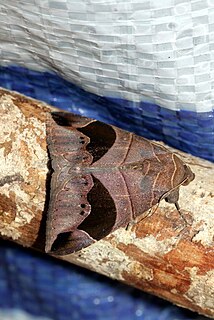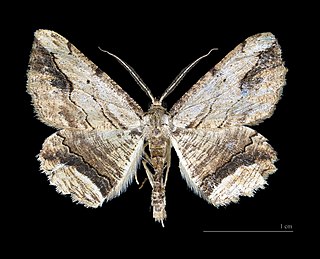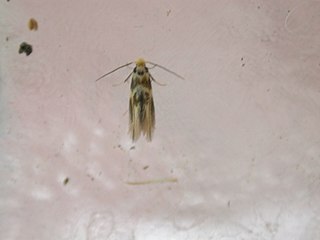
Carl Peter Thunberg, also known as Karl Peter von Thunberg, Carl Pehr Thunberg, or Carl Per Thunberg, was a Swedish naturalist and an "apostle" of Carl Linnaeus. After studying under Linnaeus at Uppsala University, he spent seven years travelling in southern Africa and Asia, collecting and describing many plants and animals new to European science, and observing local cultures. He has been called "the father of South African botany", "pioneer of Occidental Medicine in Japan", and the "Japanese Linnaeus".

Perizoma flavofasciata, the sandy carpet or sandy rivulet, is a moth of the family Geometridae. The species was first described by Carl Peter Thunberg in 1792. It is found in most of Europe and northern Africa and east across the Palearctic to the Urals and the Altai Mountains. The species prefers meadow valleys, floodplains, waterside areas, bushy meadows and gardens. In the Alps it rises to 1500 metres.
Cymaroa is a monotypic of tiger moth genus in the family Erebidae erected by George Hampson in 1905. Its only species, Cymaroa grisea, was described by Carl Peter Thunberg in 1784. It is found in Lesotho, Namibia and South Africa.

Macaria brunneata, the Rannoch looper, is a moth of the family Geometridae. The species was first described by Carl Peter Thunberg in 1784. It is found in Siberia, Japan, and northern and mountainous parts of North America, and throughout Europe, though in Britain it is largely or entirely restricted to mature forests in central Scotland.

Enarmonia formosana, the cherrybark tortrix or cherry-bark moth, is a small but colorful moth species of the family Tortricidae. It is native to all of northern and western Europe, ranging south to the Maghreb. North of the Alps its range extends eastwards to Siberia and Kazakhstan. Possibly and most likely introduced populations are found in Asia Minor and North America, respectively.

Donacaula forficella is a species of moth of the family Crambidae described by Carl Peter Thunberg in 1794. It is found in China (Heilongjiang), Europe and South Africa.

Dyscia fagaria, the grey scalloped bar, is a moth of the family Geometridae. The species was first described by Carl Peter Thunberg in 1784 and it can be found in Europe.

Tebenna micalis, also known as the small thistle moth, is a species of moth in the family Choreutidae found worldwide. It was first described by the German Bohemian entomologist, Joseph Johann Mann in 1857.

Donacaula is a genus of moths of the family Crambidae. The genus was erected by Edward Meyrick in 1890.
Dyscia is a genus of moths in the family Geometridae erected by Jacob Hübner in 1825.

Bastilla joviana is a moth of the family Noctuidae first described by Stoll in 1782. It is found from the Oriental region to the Moluccas and in New Guinea and Australia. It is also present in South Africa.

Menophra abruptaria, the waved umber, is a moth of the family Geometridae. The species was first described by Carl Peter Thunberg in 1792. It is found in south-western North Africa, southern Europe and Anatolia; in the north, it is found from England to Switzerland and south-western Germany. The wingspan is 36–42 mm. Adults are on wing from April to June. Normally, there is one generation per year, although there can be a partial second generation in summer.

Philedonides lunana, also known as the heath tortrix and Walker’s Lanark tortrix, is a moth of the family Tortricidae. It was first described by Carl Peter Thunberg in 1784 and is found in most of Europe.

Bucculatrix thoracella, the lime bent-wing, is species of moth in the family Bucculatricidae, and was first described in 1794 by Carl Peter Thunberg as Tinea thoracella. It is found throughout Europe with exception of Ireland and the Balkan Peninsula, and in Japan, where it occurs on the islands of Hokkaido and Honshu.

Tebenna is a genus of moths in the family Choreutidae.

Greta Tintin Eleonora Ernman Thunberg is a Swedish environmental activist who is known for challenging world leaders to take immediate action for climate change mitigation. She speaks fluent English, and most of her public interactions are in English. Thunberg initially gained notice for her youth and her straightforward and blunt speaking manner, both in public and to political leaders and assemblies, in which she criticizes world leaders for their failure to take what she considers sufficient action to address the climate crisis.
This article documents notable events, research findings, effects, and responses related to global warming and climate change during the year 2019.














